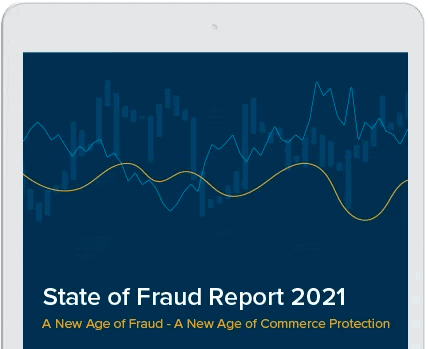The old school of ecommerce fraud prevention tended toward avoiding risk, to the point of being risk averse. Fraud teams at some online retailers wanted to avoid the possibility of a fraudulent transaction at nearly any costs. As a result, they often declined legitimate sales.
But retailers took a direct revenue hit from that approach.
Now, things are changing. Rather than working from a defensive crouch, retail fraud and risk intelligence teams are embracing technology and strategies that allow their companies to ship more orders—and make more money.
They’re transforming themselves with the help of intelligent, automated systems and the huge volumes of data that accrue daily, from a timid stance to a fearless one that prioritizes optimizing the business rather than minimizing loss. By re-envisioning their roles, these new fraud teams are moving away from being viewed as yet another cost center, and instead are being hailed as teams that drive higher revenue.
The pandemic spawned a golden age of e-commerce fraud
All this is critical because we’re in a golden age of fraud, according to Signifyd’s latest “State of Fraud Report 2021.” It points out that COVID-19 dramatically changed consumer behavior—and fraudsters seized the opportunities that the transformation offered.
Modern Ecommerce Fraud Detection teams are embracing risk intelligence. Those leading the way:
- Have traded risk aversion for business optimization, powering revenue-building initiatives like curbside pickup and cross-border selling.
- Deploy machine-learning solutions powered by vast retail networks, like Signifyd’s Commerce Protection Platform.
- Focus on maximizing approval rates and conversion rather than on merchant protection from chargebacks.
A Signifyd study determined that every $100 in fraud, ultimately costs merchants $196 when the related expenses are added up. A separate report found that the total cost of fraud in North America has increased by 15% since pre-pandemic days.
COVID has dramatically increased the importance of online sales
What’s behind this? The rising importance within retailers of their online sales channels. In the past — pre-COVID-19 — ecommerce made up less than 10% of total retail sales. At the height of the pandemic that portion reached a third of all sales — a trend that is not turning around and is unlikely to be derailed once the world moves past the pandemic. The pandemic changed shopping behavior. Online is a critical part of the business, and declining all questionable sales is no longer a tenable strategy.
Instead, fraud teams need to understand the customer’s journey and make sure legitimate orders aren’t denied at any point on that journey. Suddenly, the real job of the fraud team is to enhance the customer experience by ensuring speedy turnaround of accepted orders, which will directly bolster the top line.
Consumers have zero tolerance when it comes to experience
More than half of consumers told Signifyd that they will accept just one bad experience from an online retailer before they will go away and never come back. Being declined for no apparent reason would be that one bad experience for most consumers. Two thirds of them said they would definitely stop shopping with a retailer that did that to them at checkout.
This leads to an e-tailer conundrum: What’s the best way to avoid fraud related chargebacks? Don’t ship any orders. It sounds ludicrous when put that way. Yet in the past, fraud teams defended their actions on the basis that they were keeping chargebacks low. This can backfire, however, and the net loss to the business can be great.
Three reactive anti-fraud stances that no longer work
Let’s look at three traditional focuses of fraud teams and reconsider them in the era of a more proactive response to fraud.
- Traditionally, risk teams were chastised for declining too many orders. And rightly so, because incorrectly declining legitimate orders has a dramatically negative effect on customer lifetime value. Legitimate customers whose orders are turned down for no good reason abandon retailers — often for good. This constant pressure caused risk teams to take defensive positions. But proving that an order should have been declined is a difficult proposition. Because the order was never completed, there’s no way of knowing whether shipping the item(s) would have resulted in a chargeback fraud detection.
A better approach — one that many fraud teams are adopting — is to take a more proactive stance that takes on a growth mindset. This proactive stance would include embracing machine-learning technology, such as Signifyd’s Commerce Protection Platform. The Commerce Protection Platform relies on data from thousands of merchants to provide insights into the identity and intent behind every order, freeing risk teams from the burden of sifting fraudulent from legitimate orders. - Risk teams also, as we previously mentioned, were fixated on preventing loss above other key goals — including turning speedy approvals into a competitive advantage. Back then, consumers shopped with a certain retailer because they wanted what only that retailer had to offer. That’s changed. Consumers not only expect high-quality products, they expect to be able to buy through the channel they prefer — and to have their orders in their hands quickly. The focus needs to be quick decision-making — deciding, in a matter of milliseconds, whether an order should be shipped or not.
- Risk and fraud management has historically been viewed as a cost line item. Protecting the business was a cost, and as a cost, the focus was on minimizing the burden, not building the functionality. Now, risk intelligence is about enabling strategic objectives — such as curbside pickup and cross-border selling — which means growth. Which means balancing the risk of chargebacks against the potential increase in sales.
All this requires quite a dramatic change in thinking about fraud and the role of the risk team. We are truly entering a new era of ecommerce. It’s time to think carefully about encouraging your risk team to focus its energy and intelligence on strategies that will lead to greater revenues, not just fewer chargebacks.
Want to learn more about transforming your fraud management team into a risk intelligence operation? We can help.











